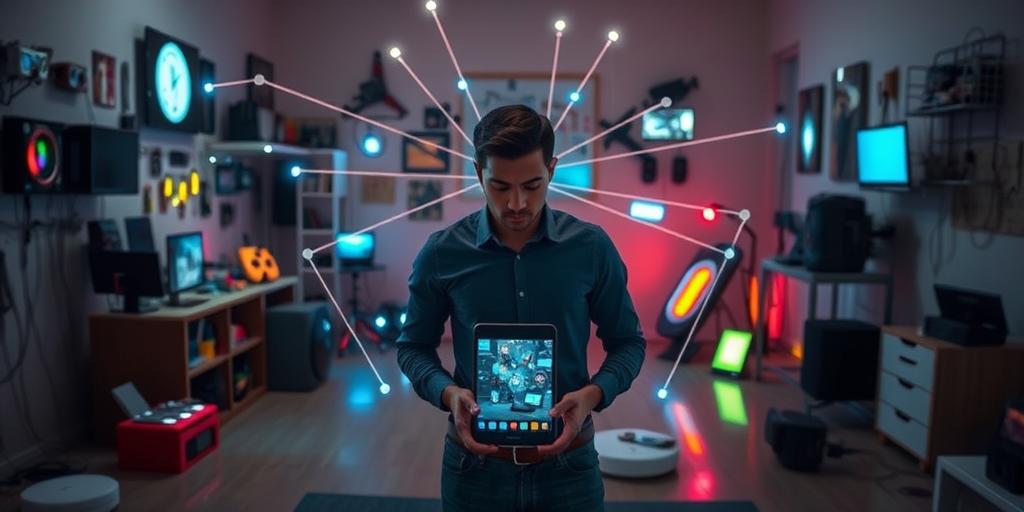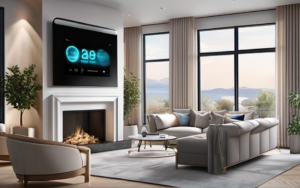Imagine a world where your devices anticipate your needs, seamlessly working together to make your life easier. This is the promise of gadget integration, and it’s becoming a reality with advancements in technology. From smart lights that automatically turn on when you enter a room to fitness trackers that sync with your music player, the possibilities are endless.
The Importance of Seamless Gadget Integration
Seamless gadget integration is crucial for creating a truly connected and convenient living environment. Imagine a world where your smart home system, wearable devices, and entertainment gadgets communicate with each other, anticipating your needs and automating tasks. This level of connectivity can boost productivity, enhance comfort, and even save you money on energy bills.
The Challenges of Connecting Devices
While the potential benefits of gadget integration are undeniable, the process of connecting different devices can be challenging. Compatibility issues, conflicting protocols, and complex setup procedures can create obstacles for even the most tech-savvy individuals.
Building a Connected Ecosystem
The key to successful gadget integration is building a cohesive and compatible ecosystem. This requires careful planning and consideration of several factors.
Choosing Compatible Devices
Before you start adding gadgets to your smart home, it’s essential to ensure compatibility. This involves considering both the operating systems and connectivity standards of your devices.
Operating Systems and Platforms
Different manufacturers often use proprietary operating systems and platforms, which can limit compatibility. For example, a device running Google’s Android operating system might not work seamlessly with a device powered by Apple’s iOS. To avoid compatibility issues, choose devices from the same ecosystem or those known to be interoperable.
Connectivity Standards (Bluetooth, Wi-Fi, etc.)
The way your devices communicate with each other is crucial for gadget integration. Bluetooth is a popular choice for short-range communication, while Wi-Fi is better suited for long-range connectivity. Some devices utilize Zigbee or Z-Wave protocols for home automation, while others rely on proprietary solutions. Choose devices that support the same connectivity standards to ensure smooth communication.
Utilizing Smart Home Hubs
Smart home hubs act as central control points for your connected devices. They streamline communication, simplify management, and enhance functionality.
Benefits of a Centralized Control Point
A smart home hub allows you to control multiple devices from a single interface, eliminating the need to manage each device individually. They also provide a central location for managing device settings, scheduling automations, and monitoring energy consumption.
Popular Smart Home Hub Options
There are numerous smart home hub options available, each with its strengths and weaknesses. Some popular choices include Amazon Echo, Google Home, Apple HomePod, and Samsung SmartThings. Consider your existing smart home devices and preferred ecosystem when choosing a hub.
Streamlining Your Workflow
Once you have a connected ecosystem in place, you can start to streamline your workflow by leveraging the power of automation and data sharing.
Automating Tasks with Smart Assistants
Voice assistants like Amazon Alexa and Google Assistant can revolutionize your smart home experience by enabling hands-free control and automation.
Voice Commands and Smart Home Automation
Use voice commands to turn lights on and off, adjust the thermostat, play music, and even order groceries. Automate tasks by setting up routines that trigger actions based on specific conditions, such as turning on the coffee maker when you wake up or dimming the lights at sunset.
Integrating with Calendar and Reminders
Integrate your smart assistant with your calendar and reminder apps to receive notifications, schedule tasks, and manage appointments. For instance, you can set a reminder to water your plants or receive a notification when your favorite show is about to start.
Sharing Data Between Devices
Seamless gadget integration often involves sharing data between different devices to create a more holistic and personalized experience.
Cloud Storage and Synchronization
Cloud storage services like Google Drive and Dropbox allow you to access files and data from any device, ensuring your information is always readily available. You can also synchronize your calendar, contacts, and other data across devices to keep your information up-to-date.
Cross-Device File Transfer
Sharing files between your smartphone, tablet, and laptop is made easier with cross-device file transfer solutions like AirDrop (for Apple devices) and Nearby Share (for Android devices). These features allow you to transfer files wirelessly with ease.
Troubleshooting and Optimization
Even the most well-planned gadget integration system can encounter occasional hiccups. It’s important to be prepared to troubleshoot connectivity issues and optimize your system for optimal performance.
Common Connectivity Issues and Solutions
Connectivity problems are a common issue with gadget integration. These can include slow speeds, dropped connections, and devices failing to connect. Troubleshooting steps include checking network settings, restarting devices, updating firmware, and ensuring compatible protocols are used.
Optimizing Device Performance
Maintaining a smooth and efficient gadget integration system involves optimizing device performance. This includes regular software updates and managing network bandwidth effectively.
Updating Software and Firmware
Regularly update software and firmware on your devices to ensure compatibility, improve security, and fix bugs. These updates often contain bug fixes and performance enhancements that can improve your gadget integration experience.
Managing Network Bandwidth
Ensure you have enough network bandwidth to support all your connected devices. Avoid overloading your router by managing bandwidth usage, prioritizing traffic for essential devices, and using a wired connection for devices requiring high bandwidth.
The benefits of a connected gadget ecosystem are undeniable. By carefully planning your system, choosing compatible devices, and optimizing your workflow, you can create a seamless and enjoyable smart home experience.
As technology continues to evolve, we can expect to see even more innovative gadget integration solutions emerge. From AI-powered assistants that learn your preferences to interconnected ecosystems that adapt to your needs in real-time, the future of gadget integration is bright. Embrace the possibilities and start building your connected future today!




